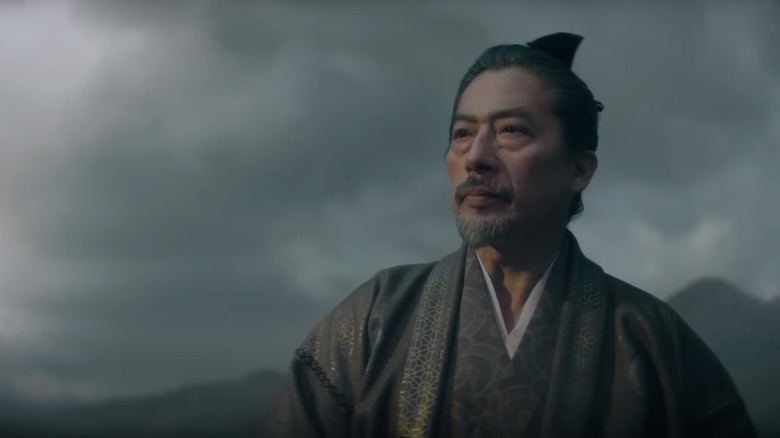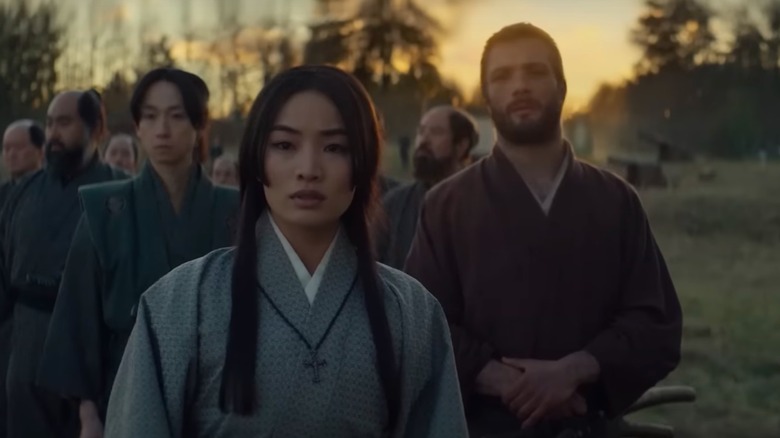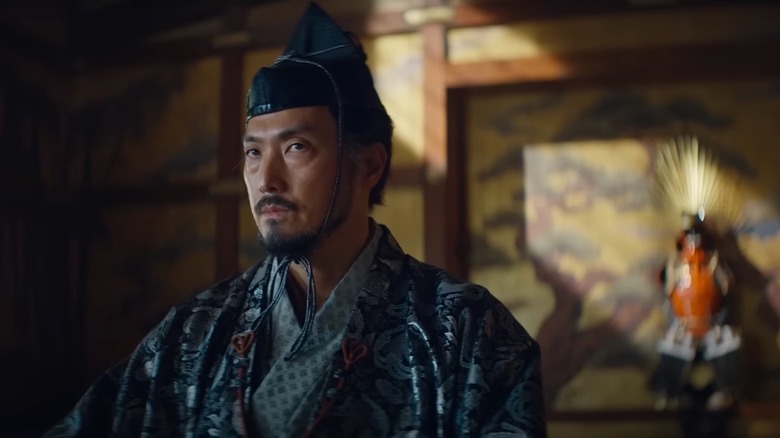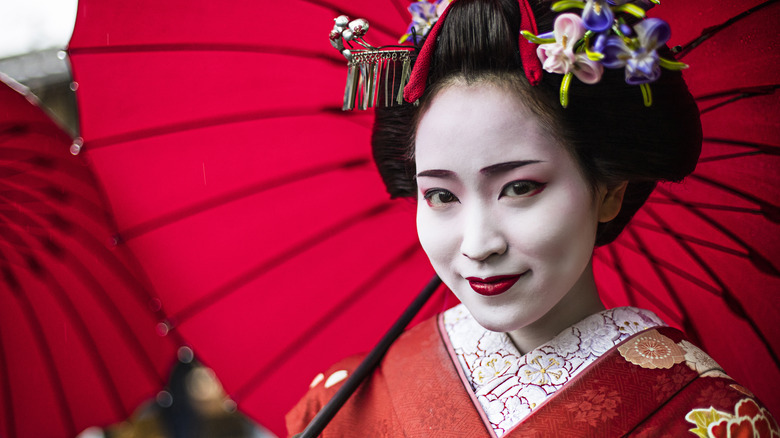Lies The 2024 Shogun Series Told You About History
"Shogun" began airing in 2024 to critical acclaim. The historical drama is based on James Clavell's novel of the same name, and both draw from actual events. The series is set in Japan in 1600 and follows Lord Yoshii Toranaga's bid for power with the help of English sailor John Blackthorne, who becomes shipwrecked in the country. These characters are inspired by real-life English navigator William Adams and Japanese Lord Tokugawa Ieyasu, who became shogun — the country's top military commander — in 1603, marking the beginning of the country's Edo Period that ran until 1868.
But like many works of art that draw from real life, "Shogun" doesn't always adhere to historical accuracy. Though the team behind the show made a conscious effort to reflect the realities of Japan at the time and the stories within it, some things were changed for one reason or another. Here are some of the most glaring untruths in the FX series.
John Blackthorne and Hosokawa Gracia never met
In the "Shogun" book, John Blackthorne becomes romantically involved with his translator Toda Mariko, and the show appears set to follow the same storyline. "They're definitely getting closer," Mariko's actress, Anna Sawai, told TVLine after Episode 3. But regardless of how their bond pans out, in real life, Mariko's counterpart — Japanese noblewoman Hosokawa Gracia — never met William Adams, the real-life Blackthorne. In fact, Gracia died in 1600, the same year that Adams crashed in Japan.
Even if the two did meet, she likely never would have had a romantic relationship with him, or any European seaman for that matter. Edwin Reischauer, leading American historian of Japan, took aim at James Clavell's book, accusing him of distorting reality. "Clavell freely distorts historical fact to fit his tale and inserts a Western-type love story that not only flagrantly flouts history but is quite unimaginable in the Japan of that time," Reischauer wrote in his foreword of the English translation of "Musashi."
Ishida Mitsunari was not a regent - and was more complex
Ishido Kazunari is the main rival of Yoshii Toranaga in the "Shogun" show and one of the five members of the Council of the Regents. He is based on Ishida Mitsunari, who indeed opposed Tokugawa Ieyasu — but was not part of Japan's Council of Five Elders. Instead, he ultimately worked with one of the regents, Uesugi Kagekatsu, to oppose Ieyasu. This is also a shift from the show, which shows Kazunari exerting power over all three of the other feudal lords.
Ieyasu's goal was to unify feudal Japan, and many historical readings present him as a hero. Meanwhile, Mitsunari is often presented as a villain, just as he is in the show. But real history may be more complex. National Geographic notes that any stability Ieyasu achieved was at the cost of freedom for Japanese citizens. "He stamped the name of Tokugawa across the annals for generations, but did so with the blood of thousands," the outlet notes.
Mitsunari's ambitions might have been less black and white, too. Though the show frames each regent as seeking the "title that would make their power absolute" — shogun — in real life Mitsunari's goals were likely more complex. He did want to stop Ieyasu's rise to power in the wake of the death of feudal lord and second "Great Unifier" of Japan Toyotomi Hideyoshi. But Mitsunari was also a loyal supporter of Hideyoshi, whom he allegedly met as a teenager, suggesting there might have been more to his mission than a simple desire for power.
Noblewomen in Japan adhered to various customs
Years ago, starting around the Heian period between 794 and 1185, aristocratic Japanese women engaged in teeth blackening, or ohaguro. They would also shave their eyebrows and paint on new ones with black ink, a custom called hikimayu. For example, when a woman married, she would use teeth blackening, and when a woman had a child, she would shave her eyebrows. During the Edo Period, these practices spread across classes and were eventually practiced by married women, unmarried women over 18 years old, geishas, and sex workers. At this moment in Japan there was a great focus on status and order, and for women, makeup was a big part of this hierarchy.
Speaking to The New York Times, Anna Sawai (Toda Mariko), said none of the actresses were asked to adhere to these customs. Though showrunner and co-creator Justin Marks said the goal of the show was "spiritual authenticity," the outlet noted that the team still took liberties with historical accuracy to avoid alienating audiences.
High-ranking women were also expected to sit in the tatehiza position — with a knee raised — but the team decided this would be distracting for the audience.



